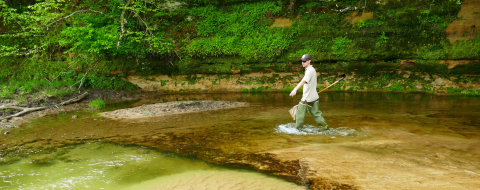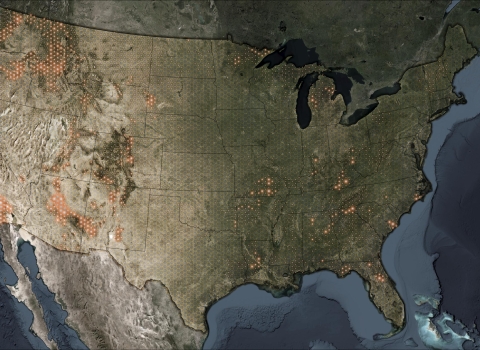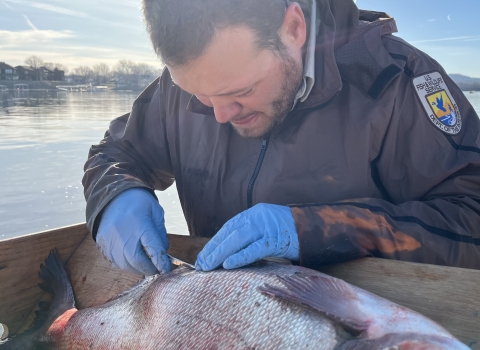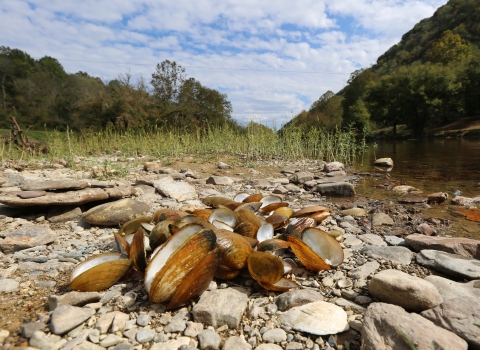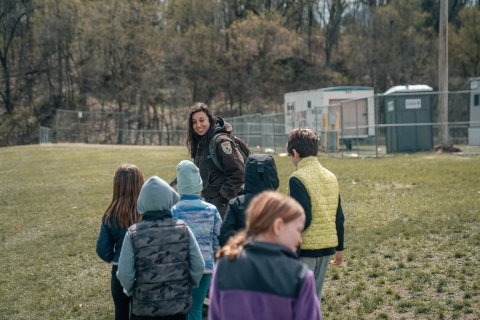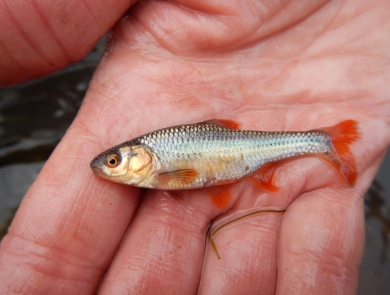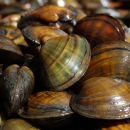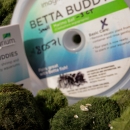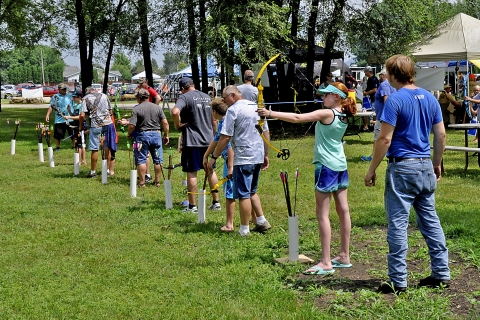About Us
Staff at the Midwest Fisheries Center are involved in a number of applied research, fisheries management, and monitoring projects. These include aquatic animal pathogen diagnostics and health monitoring, invasive carp environmental DNA early detection and monitoring, metabarcoding, native aquatic species genetics projects, GIS and telemetry projects, and management of native fish, mussels and invasive carp conducted in partnership with state natural resource agencies, tribes, universities and other federal partners including the U. S. Geological Survey and U. S. Army Corps of Engineers.
Our Mission:
“Working in partnership, we provide leadership in science, technology, and education for conservation of aquatic ecosystems emphasizing fisheries, aquatic invasive species invasive species
An invasive species is any plant or animal that has spread or been introduced into a new area where they are, or could, cause harm to the environment, economy, or human, animal, or plant health. Their unwelcome presence can destroy ecosystems and cost millions of dollars.
Learn more about invasive species , genetics, and aquatic animal health for the benefit of the public”.
What We Do
Our staff work together to monitor aquatic native and invasive species invasive species
An invasive species is any plant or animal that has spread or been introduced into a new area where they are, or could, cause harm to the environment, economy, or human, animal, or plant health. Their unwelcome presence can destroy ecosystems and cost millions of dollars.
Learn more about invasive species populations, ensure the health of hatchery-reared fish, monitor health in wild fish populations and use leading edge genetics technology for early detection and monitoring of invasive carp.
Key initiatives include:
- Management and control plan for bighead, black, grass and silver carp in the United States
- National Fish Habitat Action Plan
- National Fish Passage Partnership
- National Aquatic Animal Health Plan
- National Wild Fish Health Survey
- Great Lakes Restoration Initiative
Our Organization
The Midwest Fisheries Center houses the La Crosse Fish Health Center, the La Crosse Fish and Wildlife Conservation Office, the Whitney Genetics Laboratory, and administrative, GIS, and outreach staff.
Projects and Research
In 2023, the Data Management Branch was established at the Midwest Fisheries Center to serve the data management needs of the various program areas within the Fish and Aquatic Conservation Program in Region 3. In doing so, we are better able to meet our conservation mission by improving open access to and utility of the data we collect for the public and our conservation and management...
Understanding seasonal movements and habitat preferences of invasive species is one key to controlling them. If you want to control an invasive species, you must know where they are. To control them efficiently, you need data on their hotspots, where they live during different times of the year, and when they are most active during the day. Acoustic telemetry is one way that biologists are...
It's one of the state's most popular rivers for canoeing, kayaking, tubing, and fishing.
The Upper Iowa River offers the most public land access of all Iowa Rivers.
The Scenic River and Water Trail meanders through limestone bluffs and driftless trout streams and draws visitors from all over the country....
Across the country, scenes of thousands of freshwater mussel shells scattered on the banks and bottoms of lakes and rivers haunts scientists. For the most part these mussel die-offs are unexplained and mysterious. Pollution and contaminants are a well known cause of mortalities but in the case of these die-offs there were no contaminants found....
Visit Us
Midwest Fisheries Center Outreach Program
All of the programs we offer are free of charge. You can either come visit us for a tour or we can accommodate your needs by coming to you or meeting you at a designated location. We serve the La Crosse area and surrounding counties in all nearby states.
Our Library
All Fish Technology Centers (FTCs) are responsible for publishing at least one peer-reviewed paper per year, and most FTCs produce many more. The requirement is so negligible because publishing papers is more a means than an end for FTCs. The primary function of FTCs is to provide information that may be used to make scientifically based management decisions. Sometimes that information is very important, but not unique or complete enough to publish. Sometimes the information is so important, that it is obligatory to share it via a peer-reviewed paper.
Get Involved
The Midwest Fisheries Center offers environmental education activities for community groups and schools. In addition, the center can lend fishing poles to local community groups. Every July, the center co-sponsors Youth Outdoor Fest in La Crosse, Wisconsin in partnership with the La Crosse Parks, Recreation, and Forestry department.
Location and Contact Information
- Midwest Fisheries CenterView Details555 Lester Avenue Onalaska, WI 54650-8552


